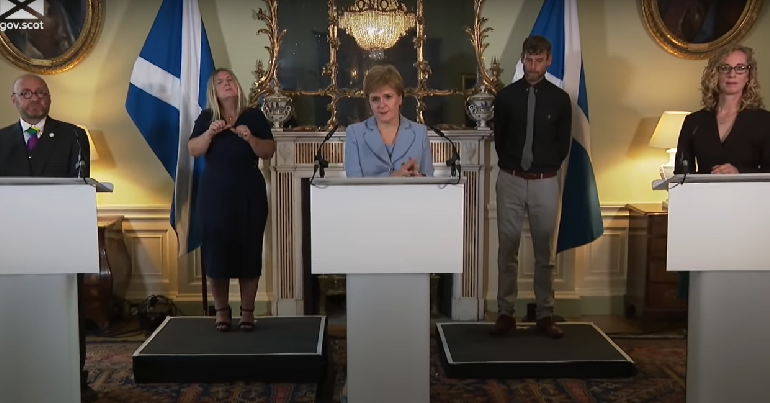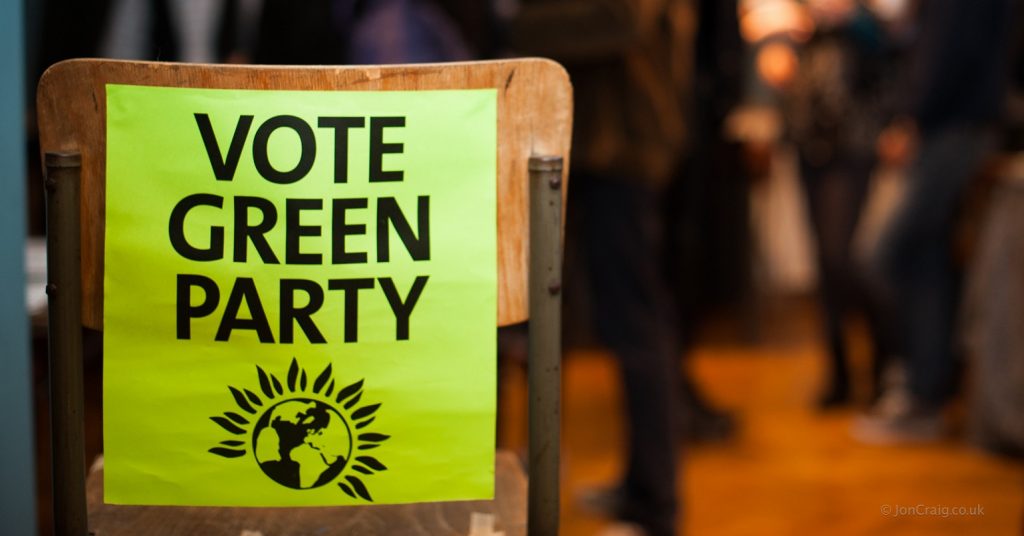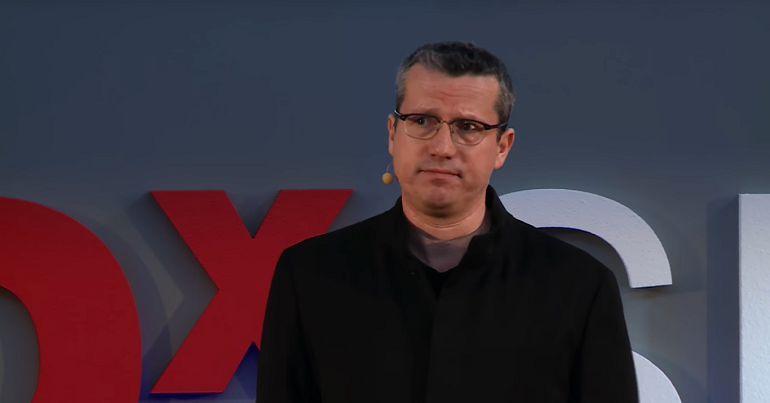Greens need to get ready for May 8th now
It’s less than six weeks until the General Election. The campaign is in full swing. Greens have candidates in over 90% of seats and are expecting our best election result ever.
So why aren’t we preparing for the day after the election?
This discussion came up at Spring Conference in a debate on prospects for the left this May. Greens could play a major role as part of a ‘progressive coalition’ of Plaid and the SNP – a 50-or-so strong bloc pushing against austerity, Trident and climate change. Yet we’ve barely talked about our priorities, where we’d compromise, or what our absolute red lines would be. Red lines are only red lines in relation to negotiations and compromises.
Is our failure to seriously discuss post-May negotiations down to pessimism? This isn’t a ‘we’re all right’ moment; it’s clear the party aren’t going to win swathes of seats in six weeks’ time – the electoral system is fundamentally against us. But we’re hoping to make a good dent. And perhaps more importantly, we’re hoping to ‘Keep Caroline,’ and not just ‘Carry On’ – but potentially win one or two more seats.
The polls are very clear. We’re heading for a hung parliament – you only have to follow May2015‘s round-up of election forecasts, all of which point to ‘no overall majority’.
Doing the numbers
In that scenario, a couple of seats can make all the difference. Let’s do some very rough back-of-the-envelope calculations.
Labour need 323 seats to govern as a majority (when you take into account the abstentionist Sinn Fein). At the moment, most predictions have them on course to win around 270. With the expected 40 or so SNP seats, that still leaves them over a dozen seats short. Despite heady expectations, the SNP are unlikely to get the 53 seats Labour needs. Even in the unlikely scenario that Labour chuck the DUP the extra billion pounds for Northern Ireland they’re asking for in return for confidence and supply or coalition (and it’s not actually clear the right-wing party would support Labour at this point, despite them saying they’d keep their options open), that still leaves Labour in need of about five seats. Plaid will get two or three, and the SDLP take the Labour whip so will add another three. We’re just over the 323 mark now. But it’s still a very fragile situation. Every vote counts. Any rebellion – no matter how small – could bring the house of cards down.
Or take another scenario. Labour get into bed with the Lib Dems. There’d be no point in a full coalition – they’d still be short. The Lib Dems are on course to lose over half of their seats – down from 57 in 2010 to around 25 in May. That only takes Labour up to 300 or so. Given that the Lib Dems have said they’d never work with the SNP, and that both Labour and the SNP have ruled out full coalitions with each other, a three-way Lab/SNP/Lib Dem coalition arrangement is basically impossible. That leaves us with less formal arrangement – namely a vote-by-vote deal. The floor would then be wide open to smaller parties. We’d be essentially back to square one.
Despite Labour’s bluster, make no bones about it – they will need these other parties to get their Queen’s Speech through, in order form a minority government and survive a vote of confidence or pass a budget. They may also need the Greens’ one or two seats.
So it’s not an exaggeration to say the Green Party could be king-makers, certainly with us negotiating in a progressive bloc with Plaid and the SNP – as has been basically agreed already. But we need our own viewpoints to contribute to this bloc. And they should be democratically decided to give Caroline Lucas (touch wood) and maybe, just maybe, one or two others the kind of backing they need to say ‘we cannot compromise on this – we’re bound by our members’.
At conference, members passed a motion saying a) Greens would never support a Tory government and b) opposing austerity would be a red line. But Labour have already signed up to austerity. So outside of that, what next?
The need to be organised
So, here’s a proposal. It’s one I suggested in the ‘prospects for the left’ fringe at conference. When it was put to the vote, the 100 or more people there voted almost unanimously in favour of it.
In 2007, the Scottish Greens set up an advisory board of people from across the party to deal with potential power sharing arrangements. There was a minority SNP government that had to rely at times on the Greens. How the Greens voted issue-by-issue was guided by this representative body. It held the party together, it gave Green MSPs legitimacy to their arguments, and it worked – it won concessions on dozens of policies while giving everyone a stake in the decisions.
We need something like this in England and Wales. And it needs to start now.
Everything is up for grabs on May 8th. If we’re not prepared, it could be the biggest wasted opportunity in a generation.
I spoke to a member of GPEX at conference in Liverpool, and they said that if there’s no democratic representative body of the party’s spectrum to deal with the post-May situation, the decisions will be made from afar by the Green Party Executive – or, more likely, GPEX’s Political Committee, a body that has virtually no standing in the constitution but is a loose (but influential) body made up of various Greens who have been elected to positions of power. It’s completely opaque, fairly arbitrary and is beset by power struggles. A body of lay-members could keep ‘progressive bloc’ discussions transparent and at the grassroots.
Where do we go from here? Well, it’s probably too late for major organisational change, it’s true. But we should at least be having a serious internal discussion about what happens on May 8th. Otherwise, we’ll be left behind. And we’ll have only ourselves to blame.
What do you think the Green Party’s ‘red lines’ and points of compromise should be in any post-election negotiations? Write your thoughts in the comments below…




My local MP’s father (and that speaks volumes?) was elected to a few years ago in a surprise result against the regional issue party.
I reckon that the incumbent son (took over from father in 2010) is using same style of coralling in the ‘congregations’ (his family would appear to have clout with local religious community), so it may well be a very close run thing between the regional interest party and the incumbent, and that has me thrawn.
If there is a convincing surge to deliver a green MP here yes lets try for it but I fear that the voter processing machine of the incumbent’s party will need every opposing vote to go to the party hwo have used a secondhand car advert for their first shot at a campaign ad (just turn off the sound and it could be selling the car not the party)
Yes I can see some innovative ways to go canvassing – using cargo bikes and pedicabs to get leaflets and canvassers into residential areas and on to pedestrian precincts, and early on Polling day get out there and ship the voters in by pedicab, or group bike rides.
Be alert also to some rather wet behind the ears PPC for one party who have alrady shown themselves to be unaware of the appropriate protocols for behaviour in the run up to the Poll and may well overstep the mark at Polling Places if not kept in check. Make sure that Green plays clean – but also plays hard – if the others are mobilising by the mosque-full or the persuasion from the priest, on their respective flocks then now is the time to lay the groundwork.
PS I had a lengthy chat with the L**r phone canvasser, today, basically saying no hope of my vote chum, but it did tie them down and mark up a not you response to get their team a bit worried.
I agree with Paul O’Neil that there are “some crazy people in the world at present”. Sadly this description fits all governments that possess nuclear weapons knowing that to use them (against a nuclear-armed enemy) would be ceratin destruction. The only rational use for British nuclear weapons is against a country not having nuclear weapons on an occasion when the USA would not back us up.
It’s not a matter of ‘red lines’ – nuclear weapons are immoral and unusable.
My feelings are that there needs to be wiggle room (concession) made regarding Trident and the nuclear deterrent in this country. As long as the relations between great-powers remain unstable (i.e. Russia and Israel/Iran), we can’t be shown to start disarmament of our nuclear deterrent. After reading a 4 page briefing in ‘The Economist’ on the very volatile and internationally dangerous political times in which we now find ourselves. I agree that “the recent hopes for Global Zero, now seem desperately premature.”
I have received cursory opposition (from one hard-liner) to this concession on Trident (and the nuclear deterrent) on the Green Party policy forum. However, if we are to be ‘King-makers’, be in Opposition and one day be in Government, we really need to take a more responsible stance on this highly strategic and important issue to the defense of European, UN and global interests. There are some crazy people in power in the world at the moment. Recognising that although we have a strong aspiration for nuclear disarmament, we need to be pragmatic and responsible to the realities at hand. The time will come when we can lead the way on “Global Zero”, but it is not that time yet.
In addition to the above point, I feel that amongst many voters we are sometimes (perhaps unfairly) seen as blue sky thinkers, not grounded in reality. If we make this concession on Trident, I suspect that it would work in our favour amongst many of the more centrist/centre-right electorate and would go a long way to making us appear more appealing to the educated (and strategic military) voters in future. I sense that it is important to be pragmatic as well as idealistic in these troubled times.
Indeed. Idealism depends on pragmatism: there are no ideas without the brains to have them.